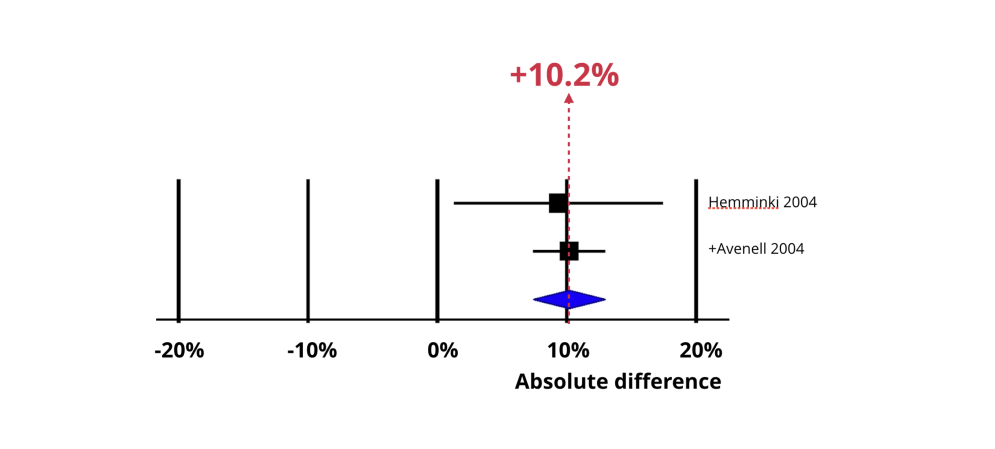Having an open rather than blinded trial (ID REC1)
Evidence Summary
What is it?
Open trials are trials where participants know which treatment they are receiving. In other words, there is no blinding.
Does it work?
Having an open trial results in a large increase in recruitment.
How big is the effect?
An increase of 10.2% (95% confidence interval = 7.4% to 13.0%).
How certain are we?
GRADE High certainty for trials involving cheap, easily available drugs.
GRADE Moderate for other interventions (e.g. an expensive drug).
Recommendation
Where integrity is not compromised, we recommend trialists use open trials to increase recruitment.
How can I use this straight away?
See Resource bundle below for details of how (and if) integrity can be protected in an open trial.
Practical Impact
Imagine a trial that needs to recruit 30 participants and initial recruitment is 30% of those approached. This means you’d need to approach 100 people to recruit 30 of them (see chart).

Now imagine using an open trial. The chart below shows the impact of an absolute increase of 10.2% (95% CI = 7.4% to 10.0%). Recruitment is now 40.2%, which means our best estimate is that 75 people would now need to be approached to recruit 30 of them.

Cumulative Meta-Analysis*

Resource Bundle
How to Cite
More Information
- This summary is from the Cochrane review of strategies to improve recruitment in randomised trials (https://doi.org/10.1002/14651858.MR000013.pub6).
- It was prepared with financial support from Evidence Synthesis Ireland.
- The ‘Does it work?’ statement is structured according to effect size and GRADE certainty as per GRADE Guidelines 26 (https://doi.org/10.1016/j.jclinepi.2019.10.014). The statement is for moderate effect size and High GRADE certainty. Where Moderate GRADE certainty applies, we would say that open trials probably increase recruitment.
- It is important to note that blinding is not the same as allocation concealment, which is what randomisation does when done properly. An open trial should not compromise the integrity of allocation concealment.
- The recommendation statement is the consensus view of the authors of this summary based on the GRADE certainty and features of the trials contributing to the evidence.
- If you have any questions contact info@trialforge.org.
